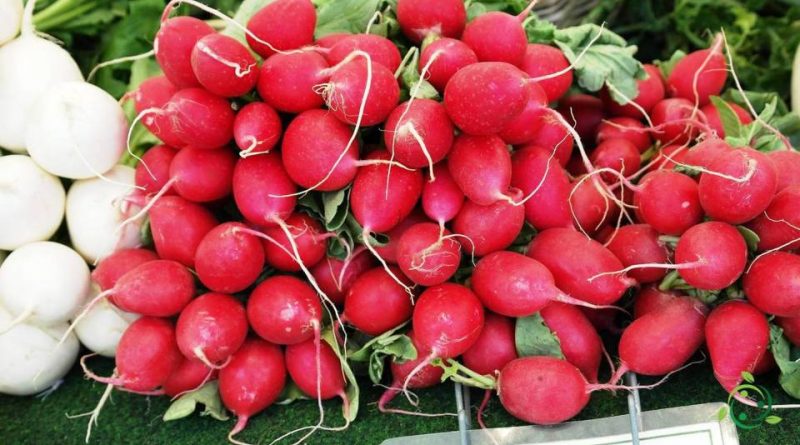Nutritional value of radish
Nutritional value of radish
The radish (Raphanus raphanistrum subsp. sativus (L.) Domin) is an edible vegetable plant of the Brassicaceae family.
Features –
The radish is a plant that is cultivated to obtain its root which is of the enlarged taproot type with various shapes and varying in color from purplish to whitish.
The plant is characterized by a tuft of lanceolate leaves and in its second year it emits white flowers which will then give the fruit.
The flowers are carried in an inflorescence, formed by a terminal and open raceme composed of several flowers (none of which in an apical position) with short pedicels. Flowering occurs in the second year of the plant’s life.
In the garden we do not see flowering because we proceed with the harvest first.
The fruit is a siliqua swollen in the central area and restricted at the apex.
Nutritional factsheet –
From a nutritional point of view, radishes are characterized by having few sugars and proteins and can therefore be recommended for some properties that we will see later.
For 100 g of product radishes contain:
– 11 kcal;
– Protein 0.8 g;
– Lipids 0.1 g;
– Carbohydrates 1.8 g;
– Sugars 1.8 g;
– Fiber 1.3 g.
It is also a food rich in precious nutrients: vitamins B and C, potassium, phosphorus, calcium and iron.
Property –
Due to its characteristics, radish is an excellent fresh vegetable, which contains a good content of mineral salts and vitamins, with a spicy flavor (it would be more correct to call it pungent, a spiciness totally different from the effect of the capsaicin found in chillies).
Although there are not enough studies, it seems that it has a tranquilizing effect, promoting sleep, and is good for asthma; digestive, purifying and diuretic properties are also attributed to it.

